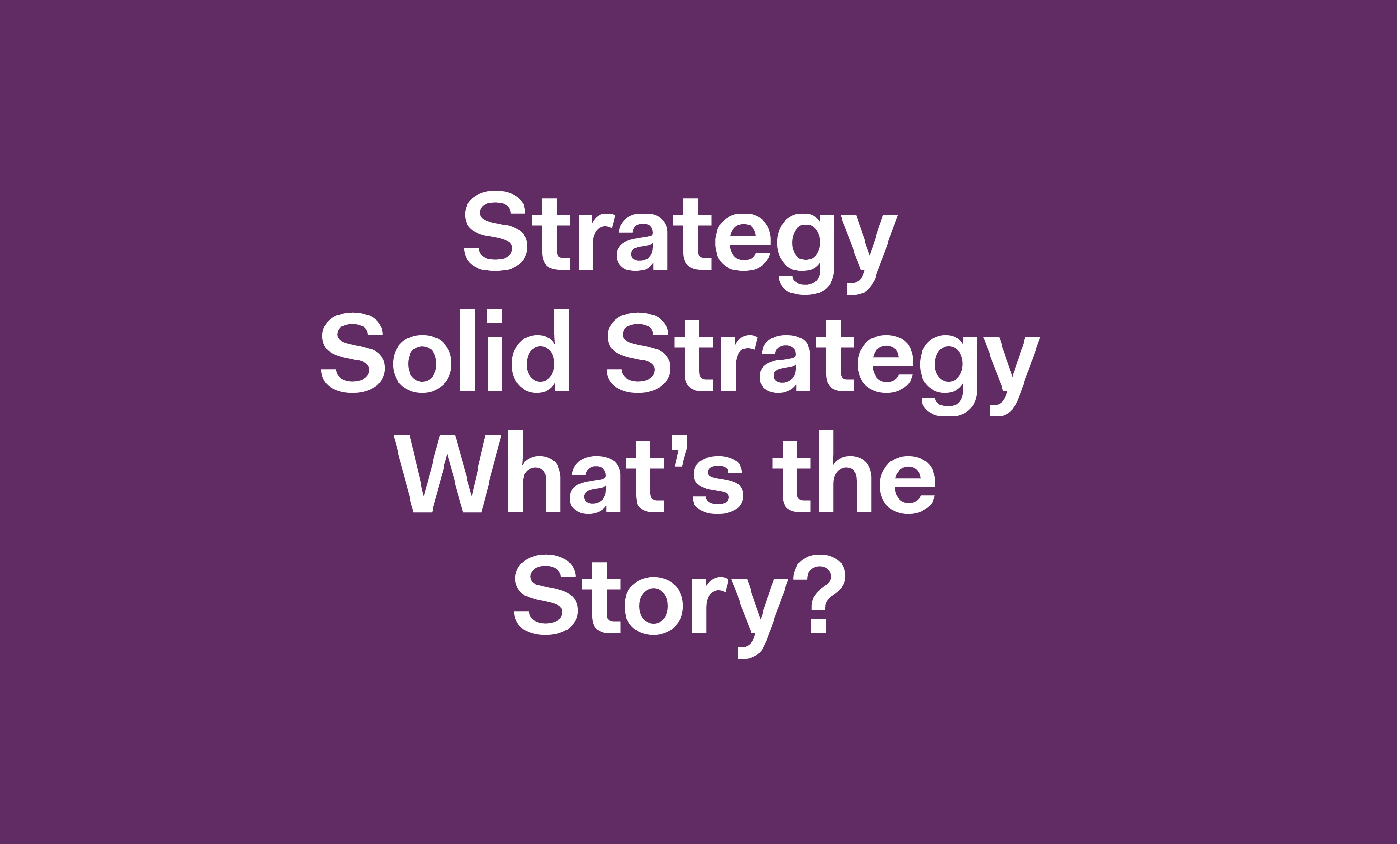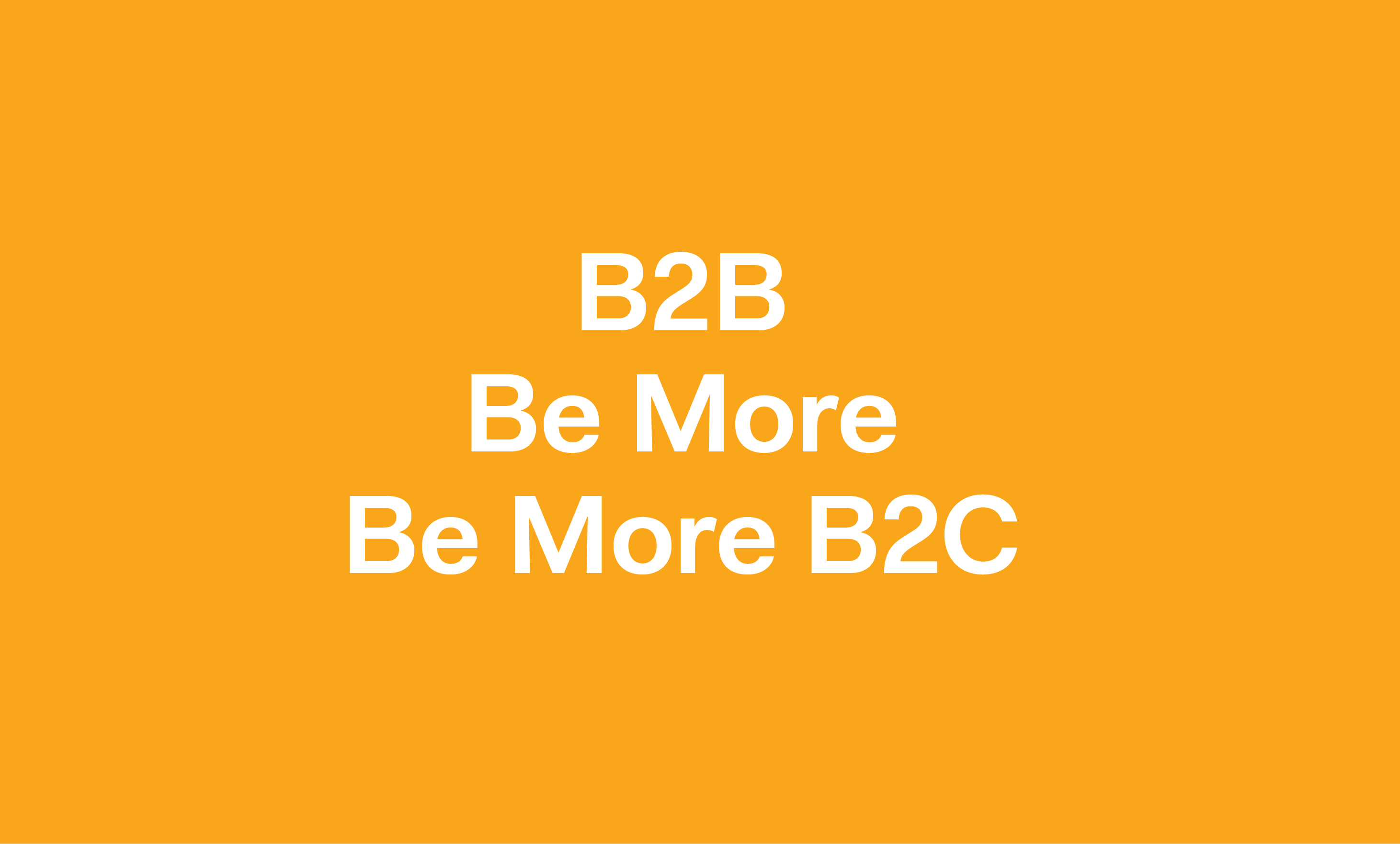It occurred to me recently, that, while most of the clients we work with at Di Marca are what you would call ‘Business to Business’ (B2B) brands, most of the great examples of successful brand strategy that I can readily recall are from consumer brands (B2C).
It’s understandable why this is the case. Successful consumer brands like Apple, Disney and Nike have more mental availability and fame with the masses than the likes of Salesforce, Siemens or Atlassian.
While most marketers have probably built much of their brand knowledge on these great consumer brand case studies and the insights to be learnt from them, I suspect there are more people out there working on B2B businesses than there are in charge of consumer products.
In an effort to find more great B2B examples to inspire our clients it got me thinking about the differences between B2B and B2C brand strategy. Is there a difference?
Well yes, and no.
Firstly, the fundamentals are the same. In a business context you’re still marketing to and communicating with people, just as consumer brands are. People use the same brain when they’re purchasing for themselves, or on behalf of a business, so the same rules apply there.
But, there is some nuance, and below are four insights I’ve come to about B2B brand strategy.
Brand strategy is an important internal driver for a B2B business
Consumer brand strategy is all about building mental availability/brand awareness with a target audience. You have a product that you’re wanting to take to a mass market, so you need as many people to know about that product, know what it looks like, and to make sure its top of mind in as many buying situations as possible.
Generally, with B2B brand strategy, the market is more niche, so you need to build mental availability with a more specific set of people, and your products or services are often sold by a sales team or through relationships, as opposed to them sitting on a shelf or in an online store.
With that in mind, I think it’s safe to say then that, generally, consumer brands are built by advertising and media, whilst B2B brands can be heavily influenced by the people representing them.
The value in a B2B business investing in developing a clear brand strategy is as much about aligning an organisation behind a common effort as it is about building brand awareness out in the market.
This is something that’s often overlooked, especially when an organisation doesn’t have a dedicated marketing team. Brand strategy isn’t seen as necessary, when in fact all of your people are your marketing team, they all need to be aligned and empowered to build that brand every day.
It also goes without saying, great brand also attracts the best people.
Purpose is important in B2B
Purpose-driven marketing has been widely criticised by many marketing leaders that I respect, and rightly so.
There is mountains of evidence to back up the fact that consumers aren’t weighing up the higher purpose of your brand when they’re reaching for a some packaging on a supermarket shelf. Most consumer purchasing decisions don’t involve that type of System 2 thinking.
But… B2B brands need to mobilise people. And people like to have purpose. It doesn’t have to be a higher purpose, but people like to be motivated to get out of bed in the morning and give it their best every day.
This is where purpose in branding is powerful, it’s something for people to get behind and feel a part of, and motivate them to do more. I’ve seen (and felt!) the lift in energy in a room when a leadership team uncovers a way to articulate their purpose succinctly, to know how powerful it is.
I was conflicted for a while when Mark Ritson was talking about purpose being bullshit, until I realised we were talking about different things. I don’t think purpose marketing makes sense (as Ritson says, “I do not want Starbucks telling me about race relations and world peace – I want it to serve me a decent coffee in pleasant locations”) however, a brand with a clear purpose can really align and motivate its people.
The long & the short of it still holds true (kind of)
Les Binet & Peter Field did some follow up research on their initial study of consumer brands, where they found that a 60 / 40 split of brand building marketing vs direct response/tactical marketing was the sweet spot when it came to long-term brand success.
With B2B brands they found that investment was needed in both brand building & tactical marketing, but a more even 50/50 split was ideal.
That means that when you’re targeting businesses, you need to try and reach as large an audience of all potential participants in the category to help them become familiar with your brand. You also need to balance this with the relevant, and tactical marketing to capture people when they are ready to buy.
I think the former is often lost in most B2B marketing departments, who are generally more focussed on looking for a direct response than playing the long game (which is actually the game they are in!)
There is another thing to bear in mind if you’re looking to target a specific type of buyer. With B2B sales there is usually more than one person involved in the decision. While the marketing department needs to specifically target interested buyers with relevant messaging to generate leads, they also need to reach all of the people who could be involved in a buying decision over the longer term. Today’s CEO might be yesterday’s Operations Manager, who might be yesterday’s Training Manager. When you’re playing a long game, you need to consider this.
Emotion has more influence over B2B buying than you might think
I think it’s safe to say that the majority of B2B marketing places too much emphasis on rational messaging – and not enough on emotion.
Appealing to the rational side of B2B buyers can work for immediate activity driving sales and leads. It makes sense for short-term tactical response marketing.
That feels logical, as most of us probably don’t identify with letting emotions influence our business decisions. Yet, once again, people use the same brain when they’re purchasing for themselves, or on behalf of a business, so of course appealing to emotions can be a good idea.
Realistically, it’s hard to build a brand that will give you long-term competitive advantage if you can’t appeal to your target audience on an emotional level. None of us are totally rational at work, we make buying decisions to solve any number of needs, many of them emotional (we want to make things easier, we want to be seen as knowledgable, we want to signal our status, etc.) Because we use the same brain, emotional impact is still the driver that creates the long-term brand effects that increase profitability and growth.
It’s a different type of emotion though. Mark Ritson calls it emotion with a small ‘e’. It doesn’t need to pull at the heart strings or be that dramatic – in a B2B context it’s probably more effective to be more subtle – but it has to be there.
Human emotions like fear, hope, confidence and aspiration are all potentially applicable in a B2B mindset. Just like with consumer brands it’s important for B2B brands to invest in understanding the relevant emotions for their buyers.
At the end of the day, if you can turn your brand into one that people are talking about, and you spring to mind readily, then you create a real advantage over less familiar competitors.
Although we don’t specialise in one area or Industry, we have years of experience helping build B2B brands that can’t be ignored, so if you think your B2B brand is in need of some big brand thinking, or you’d just like to get the opinion of one of our brand strategists, then please get in touch.
Extran – Keeping industry moving
Bennetts – Bringing you the world of coffee




